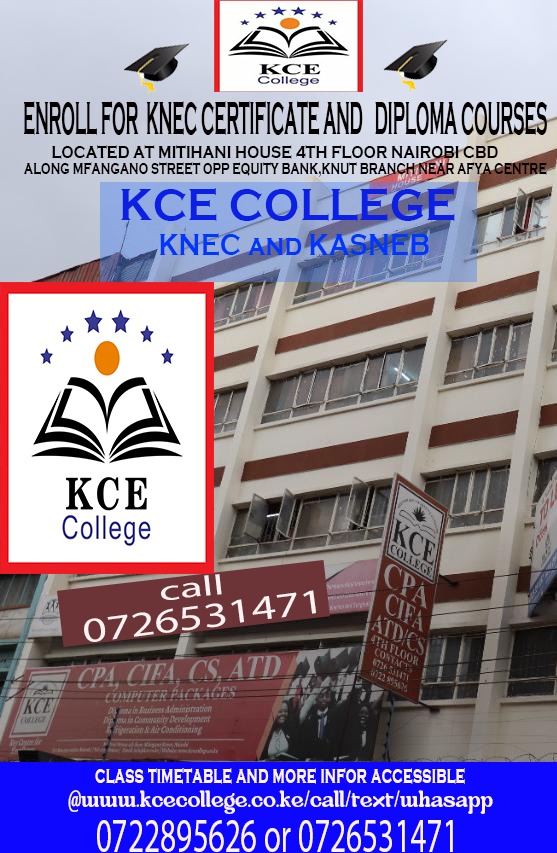c) (i) & (ii)
Audit control involves three key elements: –
(i) Direction of audit staff
(ii) Supervision
(iii) Review of work done by staff.
Direction should be given to staff to whom work is delegated. Direction will involve informing staff on their responsibilities in a given audit and the objectives of audit procedures to be performed by them.
It also involves informing the staff of matters such as the nature of the entity‘s business on possible accounting and auditing problems that may affect the nature timing and extent of fraud involved.
Written audit programmes are used as important tools to communicate audit direction. Direction is effected using time budgets audit plans.
Supervision is related to both direction and review and is conducted as follows: –
1. An auditor should monitor the progress of his audit work to determine whether: –
a) Staff have the necessary skills and competence to carry out the assigned task.
b) Audit staff understands properly the audit instructions.
c) Ensure that audit work is carried out in accordance with program and other planning documentation.
2. The partner should be informed of key significant questions raised during an audit to assess their significance and modify his audit programme where appropriate.
3. The partner should resolve any difference of professional judgment of audit personnel. Supervision required of an assignment will depend on the complexity of the assignment as well as the proficiency of audit staff. However, the reporting partner has to ensure that audit work has been performed to acceptable standards and that working paper provide adequate evidence of work that has been carried out.
AUDIT REVIEW
Audit work performed by each audit staff should be reviewed by personnel of high level competence to determine whether:
a) Such work has been performed in accordance with professional standards and guidelines
b) Audit work performed and results obtained have been documented
c) Any significant audit matters have not remained unresolved.
d) Audit objectives have been achieved and conclusions expressed are consistent with the results of audit work done and support his opinion of financial statements.
Another important technique in audit control is consultation in areas where matters of principle which are controversial, arise in which case the reporting partner should consult with other accountants, partner or independence specialists to resolve the issues.
Control is important in the final stages of an audit. In this case a checklist with sections to be filled by the reporting partner to achieve good audit control is used.
Quality Controls
This refers to the various policies and procedures put in place by the audit firm to ensure that the work carried out and opinion formed meets the audit standards as required by the ISA and the firms own quality standards.
Quality controls promote observation of personal standards relevant to audit work or described in Ethical statements published by professional bodies e.g. ICPAK. The auditor should ensure that he establish the best channel to communicate quality control to all levels of staff. Quality control policies are therefore the objectives and goals to ensure that quality audit work has been performed.
The following procedures provide assurance of achieving the objectives of quality control: –
i) Personnel policies:- Personnel in an audit firm should adhere to principles of objectivity and confidentiality.
ii) Skill and competence:- The firm should be staffed by personnel who have attained and maintained the skill and competence to enable them do their work.
iii) Audit assignment:- Audit work should be assigned to personnel who have the desired degree of technical training and proficiency required for the audit circumstances
iv) Direction and supervision:- This should be sufficient of audit work at all levels to provide the firm with reasonable assurance that work done by the firm meets the standards of quality established by the firm.
v) Acceptance and continuation of clients: The auditor should carry out an evaluation of audit clients prior to acceptance of audit assignments and should periodically review his association with existing clients so as to ensure that independence and ability to service such a client and achieve the proficiency of an audit is possible. In this case, the integrity of the clients management must be continuously assessed to avoid problems of auditing clients who lack integrity who are considered to be high risk clients.
vi) Review of working papers:- Each working paper should be signed and dated by the person who prepared. The final review of working papers should be done by the reporting partner which will enable the auditor to:
a) Ensure that figures in the draft account make sense in the light of evidence gathered.
b) Assess any impact of any unadjusted errors in the drafts and whether it maybe necessary to request further adjustments.
c) To ensure that all appropriate disclosures and other requirements have been complied with in the statements.
d) Ensure that there is relevant reliable and sufficient audit evidence to support the auditors opinion.
